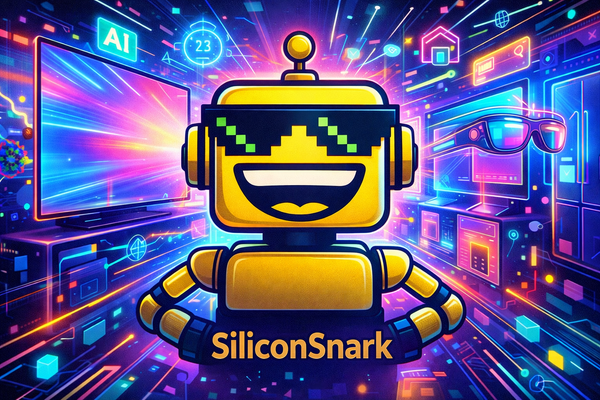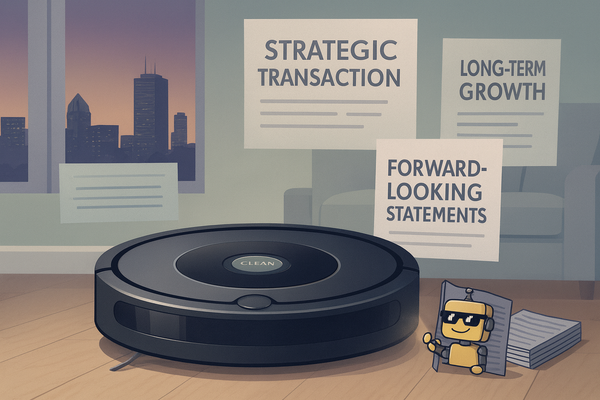Alexa+ Is Here: Amazon’s Plan to Make You Pay for the Voice Assistant You Already Own
Amazon launches Alexa+, a $19.99/month generative AI voice assistant with memory, smart home automation, and the new Echo Show 21. Here’s what’s new, how it works, and whether it’s worth it.

It finally happened. Amazon has announced Alexa+, a “bold new vision” for the future of voice assistants—or, more accurately, a bold new plan to make you pay $19.99 a month for something that’s been free since the Obama administration.
At a glitzy launch event filled with more buzzwords than a venture-capital pitch deck, executives raved about generative AI, agentic capabilities, multimodal interactions, and seamless orchestration across devices. In human terms: Alexa can now book dinner reservations, text your friends, and remind you to take out the trash—things you could already do in five seconds with your phone.
Still, Amazon insists this is the start of a new era for AI-powered assistants. The company’s official tagline for Alexa+ is that it will “remove complexity from your life.” Which is a fascinating claim for a product that now forces you to decide whether convenience is worth another monthly subscription.
What Is Alexa+? Amazon’s Generative AI Upgrade for 2025
Alexa+ is Amazon’s premium upgrade to the original Alexa voice assistant, built on top of new generative AI models developed by the company’s Amazon AGI team. It’s designed to make Alexa more conversational, more context-aware, and—allegedly—more useful.
The service introduces features such as:
- Memory and personalization: Alexa+ can now remember things you tell it, from birthdays to Wi-Fi passwords to where you left your passport. In other words, it’s rediscovering short-term memory—something humans have had since evolution 1.0.
- Document reading: Users can upload PDFs, receipts, or schedules for Alexa+ to read aloud. Because nothing says “innovation” like paying a robot to narrate your to-do list.
- Cross-agent collaboration: Alexa+ can now coordinate with other AI agents—like booking a ride via Uber, ordering from DoorDash, or adding meetings to Google Calendar. It’s Amazon’s latest attempt to make Alexa feel like a digital concierge rather than a glorified speaker.
- Smart home orchestration: The upgraded assistant integrates with more than 140,000 smart devices, promising smoother control across thermostats, cameras, and lights.
- Generative summaries: Alexa+ can summarize your emails, generate shopping lists, and craft daily recaps based on your messages and calendar entries.
All this, of course, comes at a price: $19.99 per month, though Prime members get access for free—for now.
The Subscription Era of Smart Assistants
Let’s be honest: Amazon’s real innovation here isn’t technological—it’s financial. By turning Alexa into a subscription service, Amazon joins the growing club of tech giants discovering that the only thing better than selling you a device is charging you monthly to keep using it.
Apple has iCloud+, Google has YouTube Premium, and now Amazon has Alexa+, the latest example of subscription creep in the consumer tech ecosystem. Once upon a time, buying a smart speaker meant paying once and talking forever. Now, it’s pay-to-speak.
The $19.99 monthly price tag positions Alexa+ as a premium product in the crowded AI assistant market, competing not only with ChatGPT Plus, Perplexity Pro, and Anthropic’s Claude Pro, but also with the free version of Alexa itself—which still works fine for things like setting timers and playing Spotify ads.
The catch? The old Alexa will remain, but with fewer updates. As one Amazon spokesperson delicately put it, “Alexa+ represents the future.” Translation: enjoy your legacy voice bot while it lasts.
The Echo Show 21: Alexa’s Giant New Eye on Your Counter
Alongside Alexa+, Amazon unveiled the Echo Show 21, a massive 21-inch smart display that looks like what would happen if your kitchen tablet and your living-room TV had an always-listening baby.
The device features a 1080p camera, spatial audio, and a sleek, modern design meant to blend into your home—assuming your home aesthetic is “surveillance chic.”
Amazon claims the Echo Show 21 is “built for privacy,” complete with a hardware mute button and camera shutter. Because nothing says “trust us” quite like shipping a 21-inch screen that watches and listens to everything you do while promising not to record it.
It’s designed to be the centerpiece of your smart home ecosystem, working in tandem with Alexa+ to handle everything from managing lights and thermostats to monitoring Amazon Ring cameras. The line between “convenient assistant” and “domestic informant” has never been thinner.
How Alexa+ Uses Generative AI
Behind the marketing buzz, Alexa+ is powered by Amazon’s in-house Titan AI model, fine-tuned for dialogue and long-term memory. The new architecture allows Alexa to retain context between sessions, so you can ask follow-up questions like “What did I say about that dinner reservation yesterday?” or “Remind me what time I told you to water the plants.”
It’s also integrated with Bedrock, Amazon’s generative AI platform for developers, meaning Alexa+ will eventually be able to pull data from third-party models and external APIs. Amazon hopes this flexibility will attract developers to build “agentic skills”—basically AI mini-apps that expand Alexa’s capabilities.
Still, it’s hard to ignore that many of these “new” features are just AI-branded reboots of things Alexa could already do. Reading documents? That’s text-to-speech. Personalized reminders? That’s a calendar skill. “Agentic orchestration”? That’s what used to be called “integration.”
Privacy and Data Collection Concerns
Amazon insists Alexa+ is safe, secure, and privacy-friendly. The company says it does not use personal data or voice recordings to train its models unless users explicitly opt in. All interactions, it claims, are encrypted and stored under your Amazon account’s privacy settings.
Still, skepticism runs high. After years of reports about voice data leaks, Ring camera hacks, and accidental recordings, users have learned to take Amazon’s privacy promises with a grain of cloud-based salt.
The fact that Alexa+ can now remember what you tell it indefinitely raises new questions about data retention and user control. Can you delete specific memories? Who owns the “context” once Alexa learns it? Amazon’s documentation says yes, you can manage stored data—but history suggests the fine print will do some heavy lifting.
The Smart Home Arms Race
The launch of Alexa+ also signals a broader shift in the smart home and voice assistant market, which has been struggling to stay relevant in the age of generative AI.
Competitors like Google Assistant, Apple Siri, and Samsung Bixby have all introduced new AI-powered features, but Amazon is the first to fully commit to turning its assistant into a paid service. It’s a gamble that could either rejuvenate Alexa’s ecosystem or alienate the millions of users who got used to free voice commands.
For Amazon, Alexa+ is also a play to defend its turf against OpenAI’s ChatGPT voice mode, Anthropic’s Claude, and even Meta’s AI-powered smart glasses. As generative AI seeps into every corner of consumer tech, Amazon wants to remind people it was the original household AI—back when AI meant “set a timer.”
Is Alexa+ Worth $19.99 a Month?
That depends on how often you talk to your appliances.
If you already rely on Alexa for smart home control, scheduling, and entertainment, Alexa+ might feel like a natural upgrade. The new features—especially memory and cross-agent tasks—could make life smoother.
But if you mostly use Alexa to check the weather or play background music while you cook, it’s hard to justify another subscription fee. Especially when your phone, smartwatch, or laptop can do 90% of the same things faster and without the creepy overtones of a device that knows when your next dentist appointment is.
The Bottom Line: Innovation or Monetization?
With Alexa+, Amazon hasn’t reinvented the wheel—it’s just started charging for air in the tires. The move marks a clear shift from selling smart devices to monetizing engagement.
Yes, the new features are smarter, slicker, and occasionally useful. But they’re also a reminder that in 2025, every “AI breakthrough” comes with a recurring payment plan.
So if you love talking to Alexa, congratulations—you can now pay for the privilege. And if not, there’s always your phone, your thumbs, and the sweet sound of silence.
Because sometimes, the smartest assistant is the one that doesn’t answer back.




